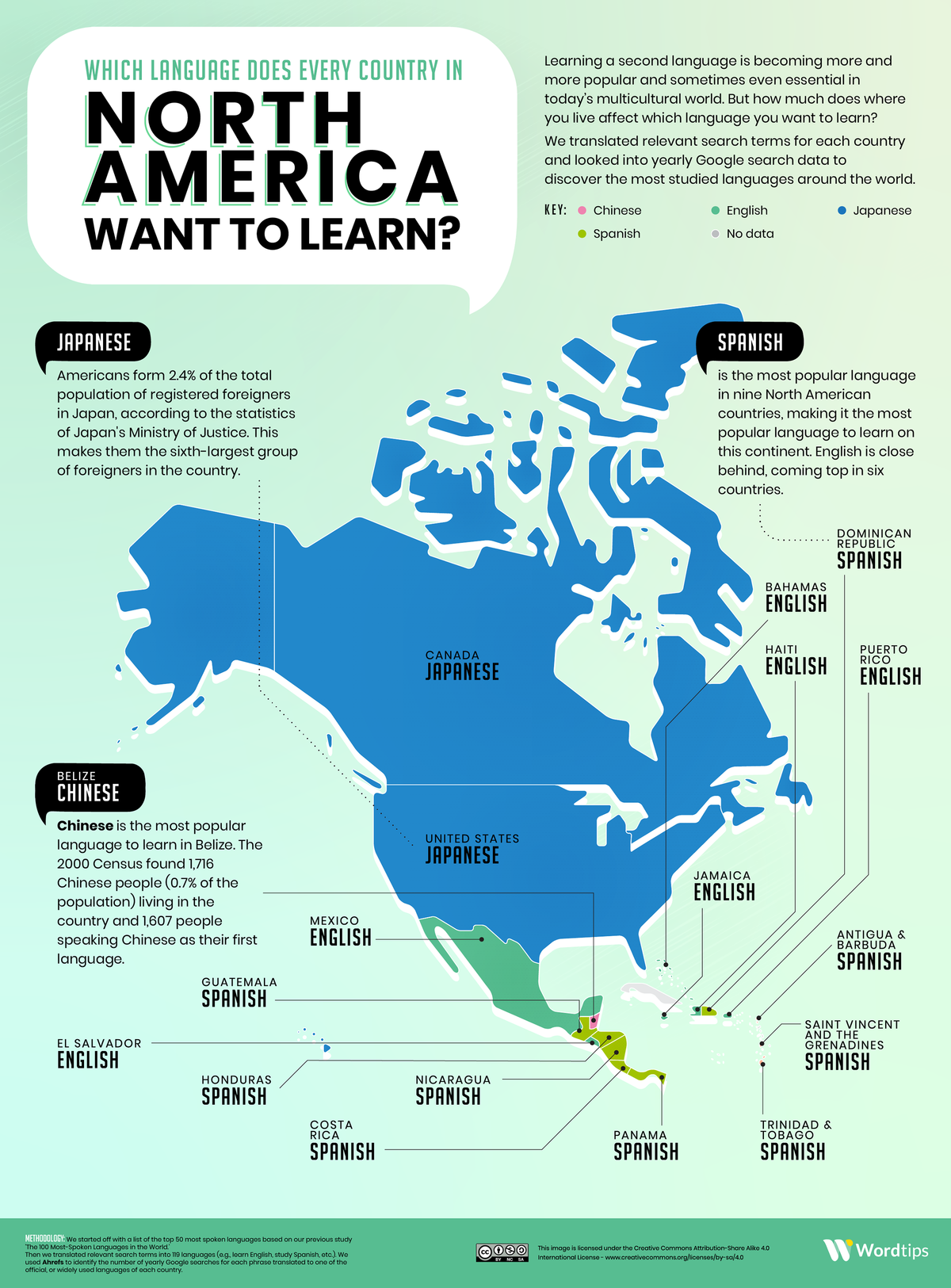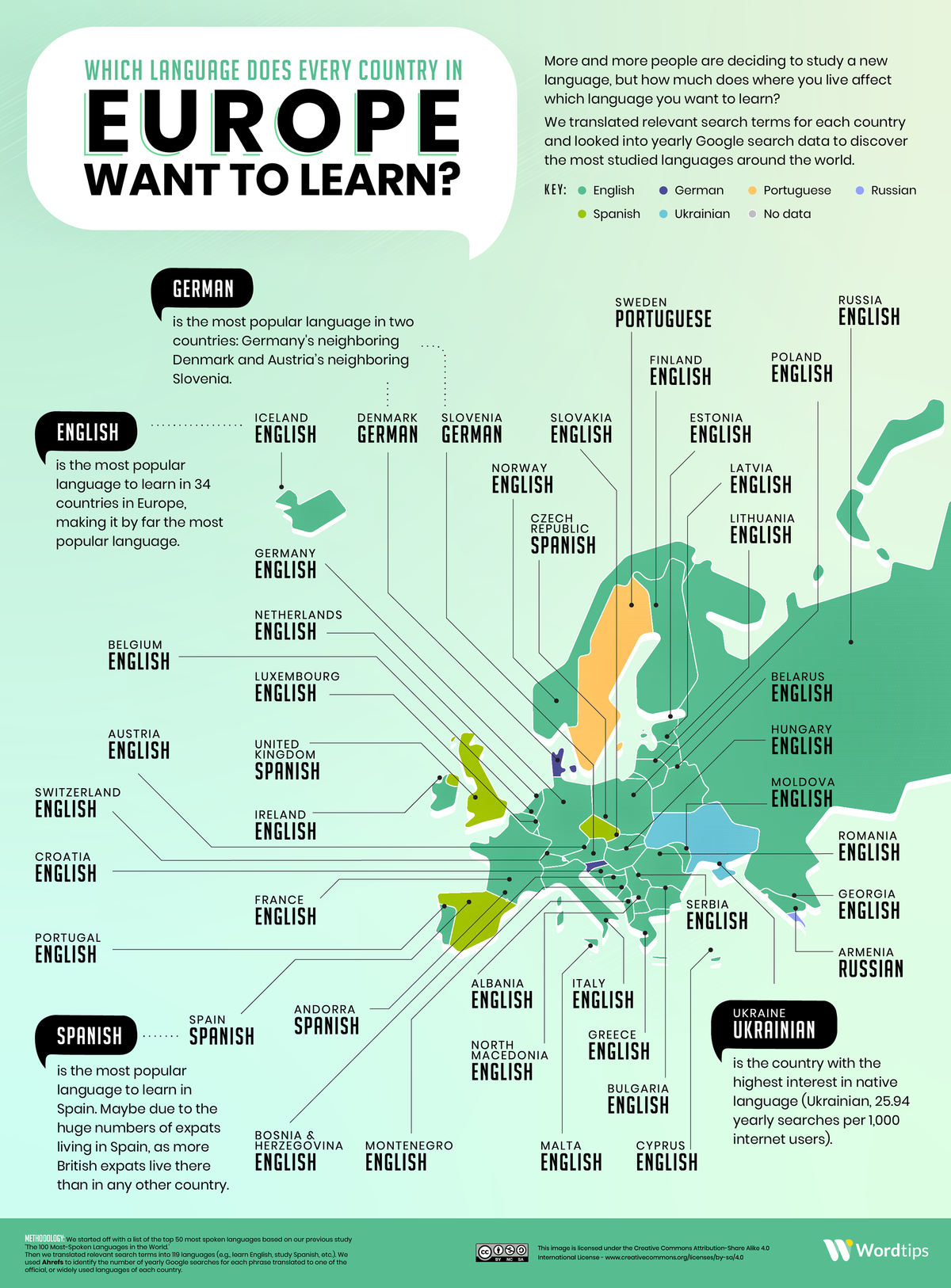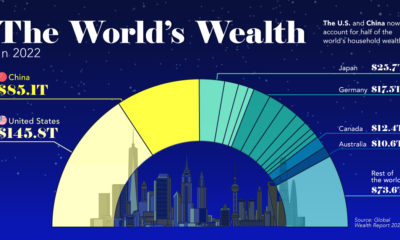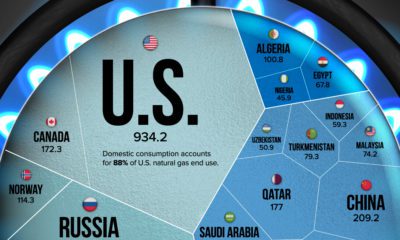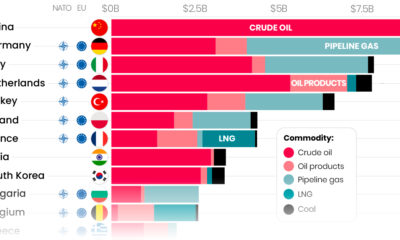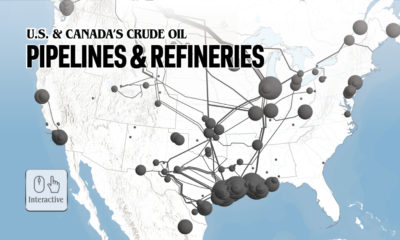But which languages were the most popular to learn in each country? This graphic by Wordtips maps the most popular language learning choices around the globe. To find out which countries wanted to learn which languages, Wordtips used Google’s Keyword Planner, and tallied the number of searches for ‘learn x language’ (translated into different languages) in every country from May 2020 to May 2021.
Most Desired Languages to Learn in North America
Interestingly, Japanese is the most popular language that Americans and Canadians want to learn. While this may sound surprising, North Americans have consumed and adored Japanese pop culture since the early 1990s. And recently, Westerners’ interest in anime has grown even more prominent, with the demand for anime programs in the U.S., for Q1 of 2021, up 33% compared to a year prior.
Another country’s top pick that may come as a surprise is Belize, where the most popular language to learn is Chinese. According to the 2000 Census, almost 1% of the country’s population identifies as Chinese. Chinese immigration to Belize began in the mid-1800s, when Chinese immigrants were brought into the country (then known as British Honduras) as laborers. More recently, a wave of Taiwanese migrants have immigrated and set up businesses in Belize, as part of Taiwan’s international development efforts. Meanwhile in South America, both Peru and Chile showed a strong desire to learn Korean. The popularity of K-Pop in South America demonstrates how media and art can help spread languages far beyond their original borders, and sometimes in unexpected places.
Most Desired Languages to Learn in Europe
English is the most popular language across Europe, as it’s the top searched language in 34 European countries.
But a few countries differ from the norm—for instance, German is the most popular language to learn in Denmark. In a small Southern region of Denmark, German is the official minority language. And according to World Atlas, up to 20,000 ethnic Germans live in the area, with about 8,000 speaking standard German as their native tongue. In the UK, Spanish takes the top spot. But more interestingly, Spanish is also Spain’s most popular language to learn, which seems counterintuitive. However, it could be because of Spain’s high concentration of British expats. According to BBC News, there are more than 300,000 British expats currently living in Spain.
Top Languages Spoken Worldwide
While English is the most popular language to learn in various countries, it’s also the most spoken language worldwide, with approximately 1.1 billion total speakers—that’s roughly 15% of the global population. And with more people interested in learning English, it looks like it could remain the world’s lingua franca (a common language among people who don’t speak the same native language) for years to come. on Even while political regimes across these countries have changed over time, they’ve largely followed a few different types of governance. Today, every country can ultimately be classified into just nine broad forms of government systems. This map by Truman Du uses information from Wikipedia to map the government systems that rule the world today.
Countries By Type of Government
It’s important to note that this map charts government systems according to each country’s legal framework. Many countries have constitutions stating their de jure or legally recognized system of government, but their de facto or realized form of governance may be quite different. Here is a list of the stated government system of UN member states and observers as of January 2023: Let’s take a closer look at some of these systems.
Monarchies
Brought back into the spotlight after the death of Queen Elizabeth II of England in September 2022, this form of government has a single ruler. They carry titles from king and queen to sultan or emperor, and their government systems can be further divided into three modern types: constitutional, semi-constitutional, and absolute. A constitutional monarchy sees the monarch act as head of state within the parameters of a constitution, giving them little to no real power. For example, King Charles III is the head of 15 Commonwealth nations including Canada and Australia. However, each has their own head of government. On the other hand, a semi-constitutional monarchy lets the monarch or ruling royal family retain substantial political powers, as is the case in Jordan and Morocco. However, their monarchs still rule the country according to a democratic constitution and in concert with other institutions. Finally, an absolute monarchy is most like the monarchies of old, where the ruler has full power over governance, with modern examples including Saudi Arabia and Vatican City.
Republics
Unlike monarchies, the people hold the power in a republic government system, directly electing representatives to form government. Again, there are multiple types of modern republic governments: presidential, semi-presidential, and parliamentary. The presidential republic could be considered a direct progression from monarchies. This system has a strong and independent chief executive with extensive powers when it comes to domestic affairs and foreign policy. An example of this is the United States, where the President is both the head of state and the head of government. In a semi-presidential republic, the president is the head of state and has some executive powers that are independent of the legislature. However, the prime minister (or chancellor or equivalent title) is the head of government, responsible to the legislature along with the cabinet. Russia is a classic example of this type of government. The last type of republic system is parliamentary. In this system, the president is a figurehead, while the head of government holds real power and is validated by and accountable to the parliament. This type of system can be seen in Germany, Italy, and India and is akin to constitutional monarchies. It’s also important to point out that some parliamentary republic systems operate slightly differently. For example in South Africa, the president is both the head of state and government, but is elected directly by the legislature. This leaves them (and their ministries) potentially subject to parliamentary confidence.
One-Party State
Many of the systems above involve multiple political parties vying to rule and govern their respective countries. In a one-party state, also called a single-party state or single-party system, only one political party has the right to form government. All other political parties are either outlawed or only allowed limited participation in elections. In this system, a country’s head of state and head of government can be executive or ceremonial but political power is constitutionally linked to a single political movement. China is the most well-known example of this government system, with the General Secretary of the Communist Party of China ruling as the de facto leader since 1989.
Provisional
The final form of government is a provisional government formed as an interim or transitional government. In this system, an emergency governmental body is created to manage political transitions after the collapse of a government, or when a new state is formed. Often these evolve into fully constitutionalized systems, but sometimes they hold power for longer than expected. Some examples of countries that are considered provisional include Libya, Burkina Faso, and Chad.
